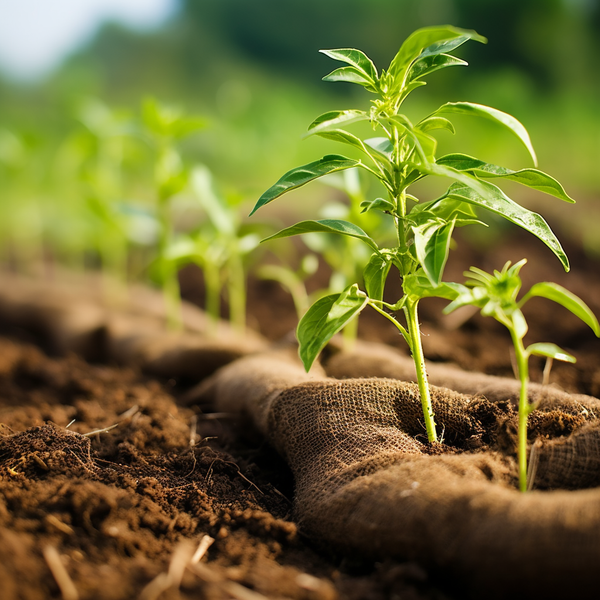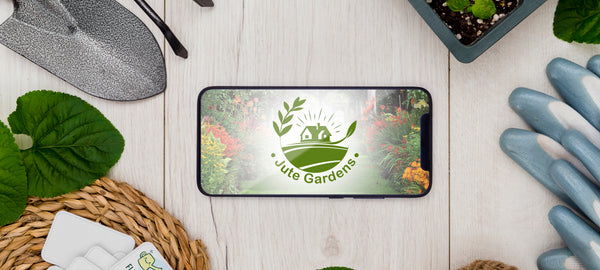
Gardening for Climate Change: How Jute Can Help
Gardening, an activity often associated with leisure and beauty, has emerged as a powerful tool in the fight against climate change. Among the various strategies employed, the use of jute in gardening presents a unique and effective approach. Jute, a long, soft, shiny vegetable fiber that can be spun into coarse, strong threads, is traditionally known for its role in the textile industry. However, its application in gardening has opened new avenues for environmental sustainability.
Jute's Role in Gardening and Climate Change Mitigation
Jute plays a multifaceted role in gardening, especially in the context of climate change. Its biodegradable nature makes it an eco-friendly alternative to synthetic materials. When used as a ground cover or in erosion control, jute helps in soil preservation. It prevents soil erosion, a major issue in many parts of the world that not only leads to land degradation but also contributes to increased carbon levels in the atmosphere. The root structure of jute plants also aids in carbon sequestration, a process where CO2 is removed from the atmosphere and stored in the soil. This aspect is crucial in the global efforts to reduce greenhouse gases, the primary drivers of climate change.
Jute and Its Environmental Benefits
The environmental benefits of jute extend beyond carbon sequestration. Jute cultivation requires relatively low pesticide and fertilizer usage compared to other crops. This attribute makes it a more sustainable choice, reducing the chemical runoff into water bodies, a common environmental issue associated with intensive agriculture. Furthermore, jute plants have a high rate of CO2 assimilation, making them efficient at converting CO2 into oxygen, hence improving air quality.
Food and Agriculture Organization (FAO): According to the FAO, jute fiber is entirely bio-degradable and recyclable, making it environmentally friendly. A key environmental benefit noted is that a hectare of jute plants can consume about 15 tonnes of carbon dioxide and release 11 tonnes of oxygen. This high rate of CO2 assimilation contributes significantly to improving air quality. Additionally, cultivating jute in crop rotations can enhance the fertility of the soil for subsequent crops, and it doesn't generate toxic gases when burnt.
Using Jute in Home Gardening
For home gardeners, jute can be incorporated in various ways. Jute mats and nets are excellent for weed control, retaining moisture in the soil, and protecting young plants. They are a natural alternative to plastic mulch, which is often non-biodegradable and can be harmful to the soil and wildlife. Jute sacks can be used for growing plants, especially root vegetables like potatoes and carrots, offering an easy and space-efficient method of gardening. These sacks are breathable and promote healthy root growth, leading to better yield.
Jute Compost and Soil Health
Another significant application of jute in gardening is in composting. Jute products, being biodegradable, can be composted along with other organic waste. This not only reduces landfill waste but also enhances soil health. The composted jute adds organic matter to the soil, improving its texture, water retention capacity, and nutrient content. Healthy soil is a key component in sustainable gardening and plays an important role in climate change mitigation by supporting healthy plant growth and reducing the need for chemical fertilizers.
Community and Urban Gardening with Jute
In community and urban gardening projects, jute can be particularly beneficial. Urban areas, often lacking in green spaces, can benefit from the use of jute in rooftop gardens, vertical gardens, and small-space gardening. Jute containers are ideal for such applications, being lightweight and versatile. Community gardens can use jute products for creating raised beds, pathways, and even for garden art projects, promoting both environmental sustainability and community engagement.
Jute's Economic and Social Impact
The cultivation and processing of jute also have economic and social implications. Jute farming supports the livelihoods of millions of small farmers, particularly in South Asia, where the majority of the world’s jute is produced. The increased demand for eco-friendly products has the potential to boost the jute industry, contributing to rural development and poverty alleviation. Furthermore, by choosing jute products, consumers in developed countries can support sustainable agriculture practices in developing nations.
Jute in Landscape Design and Large-Scale Applications
For landscape designers and those involved in large-scale gardening projects, jute’s erosion control properties are invaluable. Jute geotextiles are used for stabilizing slopes, preventing landslides, and for riverbank protection. This application not only protects the environment but also safeguards human settlements in vulnerable areas.
Future of Jute in Gardening and Environmental Sustainability
The future of jute in gardening and its role in climate change mitigation is promising. As awareness of environmental issues grows, the demand for sustainable and eco-friendly gardening practices is likely to increase. Research and innovation in the application of jute products can further enhance their effectiveness and broaden their use.
Jute Gardens offers various gardening products made from jute. These include vertical gardens, grow pots and DIY microgreen kits.

Conclusion
In conclusion, jute, with its versatile applications and environmental benefits, stands out as a valuable ally in the fight against climate change. Its role in gardening, from home gardens to large-scale landscaping projects, demonstrates its potential in making gardening not just a pursuit of beauty but also a significant contributor to environmental sustainability. Gardeners, landscape designers, and environmental enthusiasts can all play a part in this green revolution by embracing jute in their gardening practices. The humble jute plant, often overlooked, thus emerges as a champion in the global efforts to mitigate climate change and preserve our planet for future generations.

